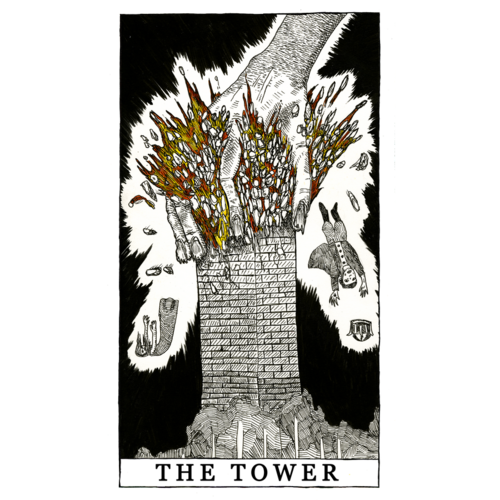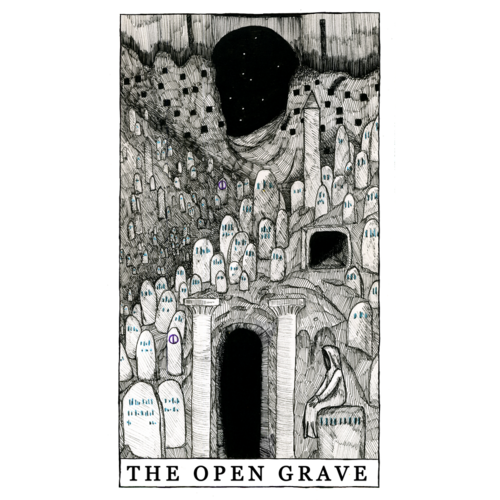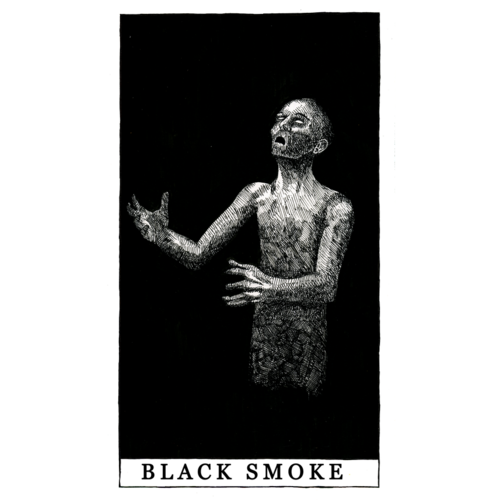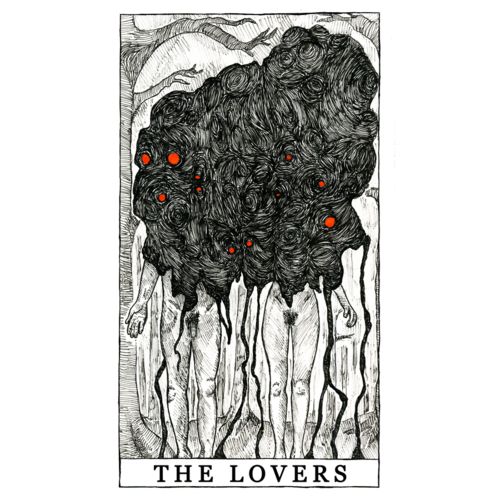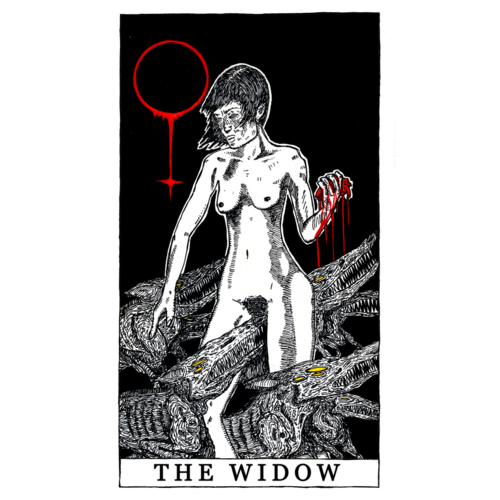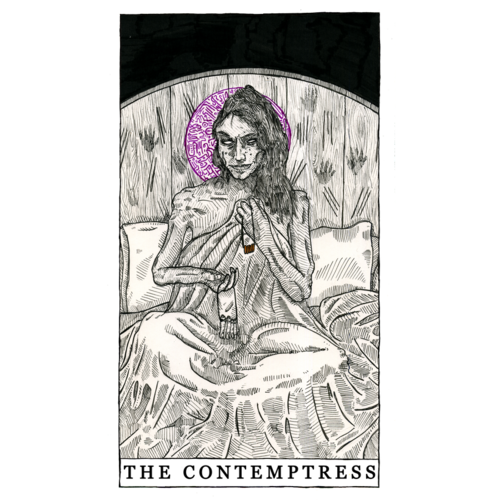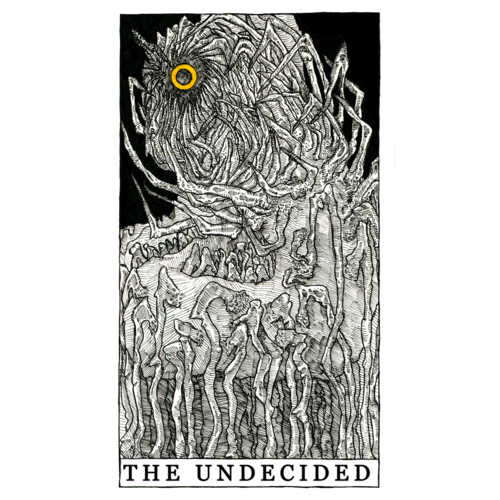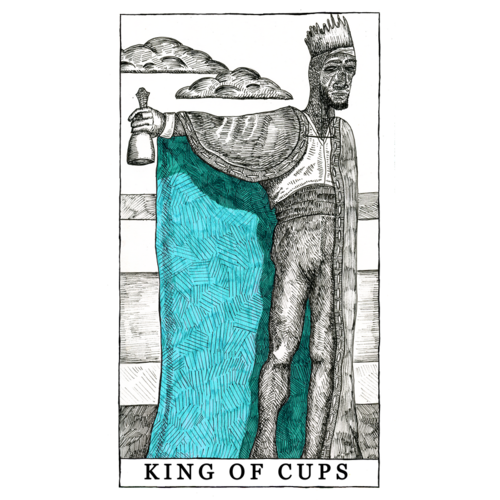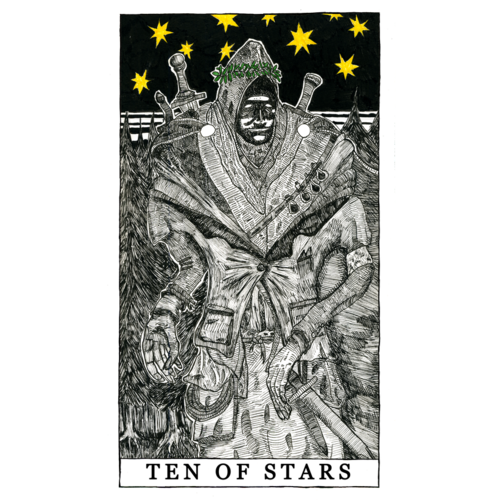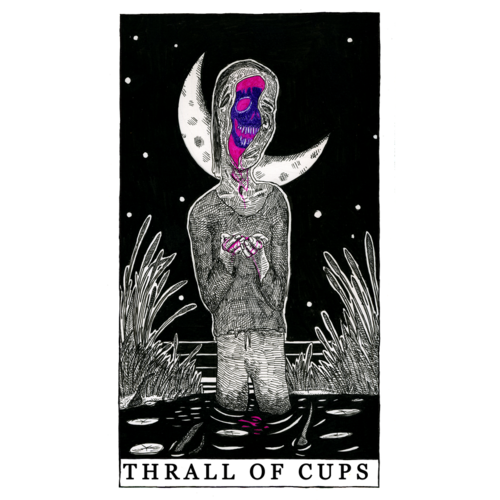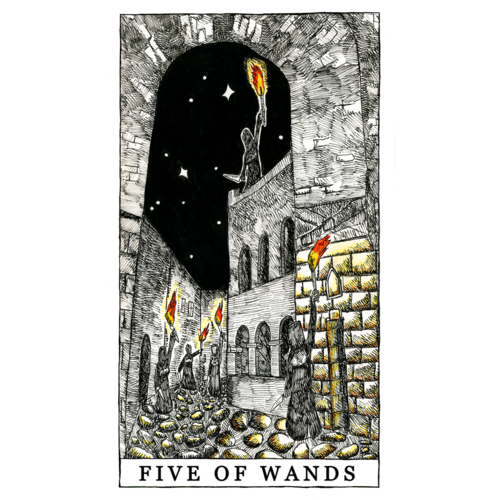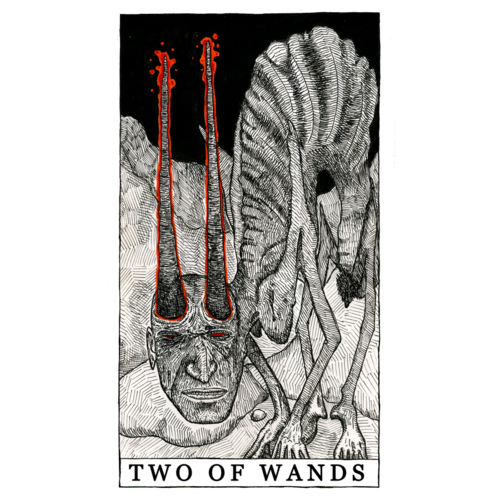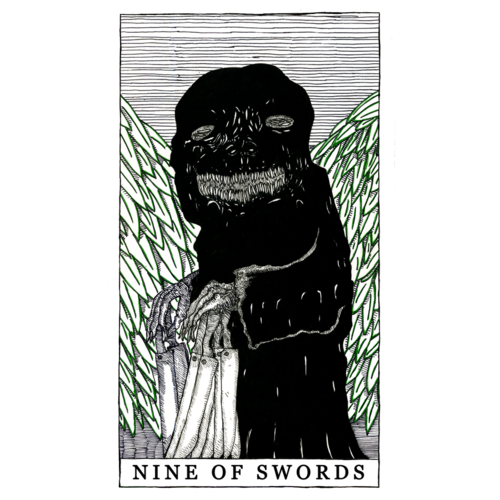The Restless Tarot - An Interview with Winslow Dumaine
The Restless Tarot is morbid, perhaps even sinister, yet I bet you won't be able to look away. The longer you stare at the characters in these cards the more they appear grotesquely lifelike. They seem to stare right back at you, pulling you down into their frenzied dystopian world.
When I first saw images of this deck I knew I had discovered something truly unique. This deck pushes the envelope in every sense of the word and these images are certainly not for the faint of heart. Upon further research I discovered that the creator of this deck, Winslow Dumaine, happened to live in my city. So for you my readers, I met up with him to discuss his story behind the creation of this dark and depraved deck.
Scarlet: Can you tell me what inspired you to make this deck?
Winslow: I would look at other tarot decks and think “how can we crank it to 11, how can we make it as extreme as possible?”
At its core, this deck is based around the end of an relationship. This deck came from a breakup with the woman I had known since childhood. The cover of the box has an illustration of my left hand with the ring finger cut off. On the back of the box that the deck comes in, it shows the ring that I wore when I was with her. In a morbid way, I’m trying to show that the experience of this breakup prevents me from ever thinking about relationships or marriage again.
When you experience trauma, you might think ‘I’ll make something out of this; I’ll use this pain to propel me into doing something cool with my life’ or ‘I’ll simply recover.’ I think that there’s not enough attention paid to how trauma can hamstring you and cause explicit distress. In all my work, I want to examine the experience of suffering, and how trauma changes a person's life.
Whenever I found myself in these intense, heated arguments with my former partner, I would find myself thinking “Well, this is it, this is what it is from here on out. The foundation is cracked; even if we make up, we’re just making cosmetic changes to something fundamentally flawed.” That sense of permanence is what helped to guide me to an eventual recovery. The way that I’ve explained it is that - You should look at your pain. You should look at your suffering, and ask, why am I here?
Too many people try to brush off serious pain. When I would tell people, “I’m in so much pain, my heart is so broken,” the first thing they say is “It will get better.” I want to say, “Yeah, but I’m suffering now.” When you say “it will get better”, it’s like going up to somebody who just lost their legs and saying “Well, someday you’ll be able to do some cool tricks with a wheelchair.” I don’t care, talk to me about my missing legs. When someone is suffering, talk to them about their pain, not some nebulous future when things are better.
In a way, this deck is an act of revenge. All my work is. Revenge against the people who failed me, who betrayed me. I do believe that living well is the best revenge, but I focus on the humiliative aspects. The expectation that I will fail drives me to succeed.
As much as this is a deck about my experiences with this one relationship, it’s also very much about the culture of sex violence as a whole. I took a lot of inspiration from strong women in my life, and their experiences guided me throughout the process.
Scarlet: One of the things that really drew me to your deck is that you wrote a short story for each of the cards. And on top of that you created your own storyline that places the characters within a wider dystopian world caused by the end of fertility. Why did you choose this wider narrative for your deck?
Winslow: The deck has one consistent storyline and the cards represent little vignettes of the wider story. The feeling I was trying to go for was to convince people that they are just seeing the tip of the iceberg; where it leaves you wondering but not questioning ‘what was that about?’ You feel an appreciation for what’s going on but you’re not lost.
My goal with everything that I do is that I want it to feel heavy and ominous, like an asphyxiating wall of confusion and fear. That’s why I set it in this vast cosmological scale.
On a personal level, because I was in this relationship for so long, and we had always planned on having a family together, I developed a sort of relationship with the notion of this potentiality. The potential for marriage and an eventual child. As the relationship ended, it was the destruction of this future and the eventual child.
When people are suffering they try to push their pain down and pretend they’re fine. What I want to say is take that pain and rip it open. Make it as big and as terrifying as you can because that’s closer to your truth. So I take this sense of ‘I’ll never have a child, I’ll never be with this person I love’ and I expand it to a cosmological degree. A future, as shown in the deck, without love and without fertility.
Scarlet: How did you get interested in tarot and decide to use tarot as your medium?
Winslow: My interest in tarot came from a few different things. Before the collapse of the relationship we went to my Dad’s house where he did a tarot reading for us with the classic rider-waite deck. I thought it was really interesting and artistically it caught my eye. I just remember that relaxed evening being the last peaceable night of the relationship before it became this avalanche of transgressions and betrayals. The tarot reading was this last little oasis before the storm.
I was also inspired to create a deck from this computer game called Hand of Fate that is based around a deck of tarot cards. I thought the artwork in Hand of Fate was really cool but asked myself ‘What if it was stranger, more morbid, more extreme?’
Scarlet: What is the hardest aspect to creating a tarot deck and do you have any advice for aspiring deck creators?
Winslow: You need to have an idea that is so broad and full of so many different variations that you can reliably get 78 interesting cards out of it. You need to have an inspiration that is massive and ambitious. Don’t start on the major arcana - those you’re going to have ideas for. I started with the minor arcana because that’s the hardest part. If you can’t figure out how you’d convey your theme while incorporating nine cups in the image, you might want to reconsider your theme.
The most important thing is just sitting down and doing the work. Great ideas are worthless if you can’t just sit down and get the work done. I would draw during every free moment at work and then I would go home and draw all night. Six to twelve hours a day, every single day. When you make a work of art as an act of revenge, you are unstoppable. If you stop, you cede to them that you are a failure.
To create a tarot deck, you have to have a great fire in you. I take my fire, and I burn their house down.
What are your thoughts on the Restless Tarot? Is this a deck you could see yourself working with in your tarot practice. Share your opinions in the comments below.
You can purcahse this deck and find more details about Winslow's creative projects on his website.
The release party for the Tarot Restless will be at "The Chicago Museum of Contempt" at the Gallery Cabaret on Friday, March 2nd starting at 6 PM. If you're in the Chicago area feel free to stop on by to pick up a deck and meet the artist.

